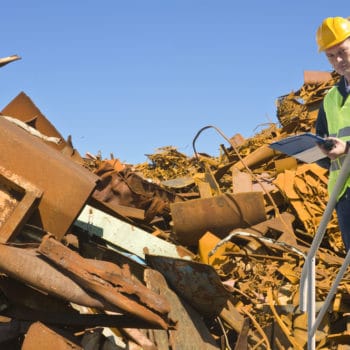Why We Love It
-
$105,720Potential Avg. Salary
-
10.4%Job Growth Rate
-
Growing DemandJob Outlook
-
Don't Take Work HomeCareer Attribute
A Crystallographer studies the composition and structure of different non-metallic minerals and molecular compounds. This is primarily done using precision tools like optical and x-ray.
Recommended Schools
What is a Crystallographer?
Duties
Here are the duties of a Crystallographer:
- Communicate accurate, detailed data on conducted experiments both verbally and through technical reports to a multidisciplinary audience.
- Collaborate with multidisciplinary scientists in synthesis or other analytical methods to optimise project outputs on a routine basis.
- Ensure that all standard operating procedures and safety standards are adhered to.
- Use computer software to create models of crystal forms and analyse the data for research.
Day In The Life
A typical day for a crystallographer involves undertaking new and existing research projects on non-metallic minerals or other compounds, depending on the industry. You will closely monitor various elements of an x-ray laboratory such as whether the diffractometer is operating without any glitches, if the liquid nitrogen is adequate, and look out for new samples delivered to the lab.
In the case of the horological industry, you will test different diamonds and abrasives to make note of their pattern, goniometric features, crystalline orientation, grain size and other factors with the aim of determining quality. Many scientists undertake such a role at a research institute or university to perform x-ray crystallographic experiments in the field of structural biology, chemistry or pharmacology.
Collecting and processing x-ray data is an important aspect of the crystallographer’s role, along with synchrotron data collection. You may oversee the work allotted to students from your class in synthetic laboratories, especially checking on experiments run on the previous day and those that will be conducted going forward to see if they require assistance with data collection or solving structures. You might also have to attend the occasional meeting with an important agency or committee, e.g. the radiation safety committee of the university or its technical services department.
Work Schedule
The work schedule is aligned with standard office hours, Monday to Friday. However, this type of job may require long hours and weekend tasks to complete projects within assigned deadlines. You must be prepared to work in a fast-paced environment with high production settings. No travel is involved unless you have to meet with clients, visiting special facilities to run experiments or attending a networking event.
Those working at laboratories must also be savvy with operating and maintaining various instruments and tools. You will also be expected to maintain lab supplies and ensure that all samples and materials are disposed in accordance with existing standards.
Growth Of The Job
As long as people need to understand atoms for scientific purposes, there are many promising opportunities for growth as a crystallographer. Individuals in these positions are responsible for finding solutions to structures that were unsolvable some years back, with the use of advanced technologies. Interested applicants holding a bachelor’s or associate’s degree are able to find work in junior level positions as laboratory technicians or research assistants. With enough years of experience and matching qualifications, one can expect to be promoted to supervisory and research-intensive roles. Some professionals in this field choose to balance a research career with teaching at an academic institution. A few also move to administrative positions such as managing national laboratories or leading research initiatives.
Typical Employers
Crystallographers are hired by employers such as universities and colleges, research institutions, pharmaceutical and biochemical companies and forensic laboratories. Employers particularly value potential candidates that display high attention to detail, mathematics skills and superior communication skills. Relevant experience in a laboratory setting is also beneficial and likely to increase your job prospects.
Recommended Schools
How To Become a Crystallographer
To start off in this subject area, you must possess at least a bachelor’s degree in materials science, biology, physics or chemistry. Based on the area you want to work in, the degree subject will vary – e.g. a protein crystallographer’s career will require a biology degree. However, research roles require additional qualifications such as a master’s degree or Ph.D. in a related field like geosciences, physics, pharmacology, structural biology, etc. As a crystallographer, you will need to undergo safety trainings to safely handle instruments that produce X-rays, high-energy electrons and neutrons.
Key skills you must demonstrate throughout your career as crystallographer includes superior problem-solving abilities, attention to detail, advanced mathematics and communication skills. If you are an individual that operates on logic and thinking rationally, this career would be a great fit for your interests.
Crystallographer Salary Data
We’ve provided you the following to learn more about this career. The salary and growth data on this page comes from recently published Bureau of Labor Statistics data while the recommendations and editorial content are based on our research.
National Anual Salary
Low Range
$62,030Average
$105,720High Range
---National Hourly Wage
Low Range
$30/hrAverage
$51/hrHigh Range
---How do Crystallographer salaries stack up to other jobs across the country? Based on the latest jobs data nationwide, Crystallographer's can make an average annual salary of $105,720, or $51 per hour. On the lower end, they can make $62,030 or $30 per hour, perhaps when just starting out or based on the state you live in.
Salary Rankings And Facts
#55 Nationally for All Careers
Above Average Salary Nationally
Highest Education Among Crystallographers
- 9.4% Doctorate
- 36.8% Masters
- 47.1% Bachelors
- 2.3% Associates
- 4.1% College
- 0% High School
- 0.3% Less than High School
Job Growth Projections and Forecast
2014 Total Jobs
36,4002024 Est. Jobs
40,200Job Growth Rate
10.4%Est. New Jobs
3,800How does Crystallographer job growth stack up to other jobs across the country? By 2024, there will be a change of 3,800 jobs for a total of 40,200 people employed in the career nationwide. This is a 10.4% change in growth over the next ten years, giving the career a growth rate nationwide of Above Average.
Growth Rankings And Facts
#176 Nationally for All Careers
Above Avg. Growth Nationally
What Companies Employ The Most Crystallographers
| Industry | Current Jobs | New Jobs Needed | % Increase |
|---|---|---|---|
| Oil and gas extraction | 8,000 | 1,000 | 1% |
| Engineering services | 6,200 | 800 | 1% |
| Management, scientific, and technical consulting services | 5,300 | 1,500 | 2% |












